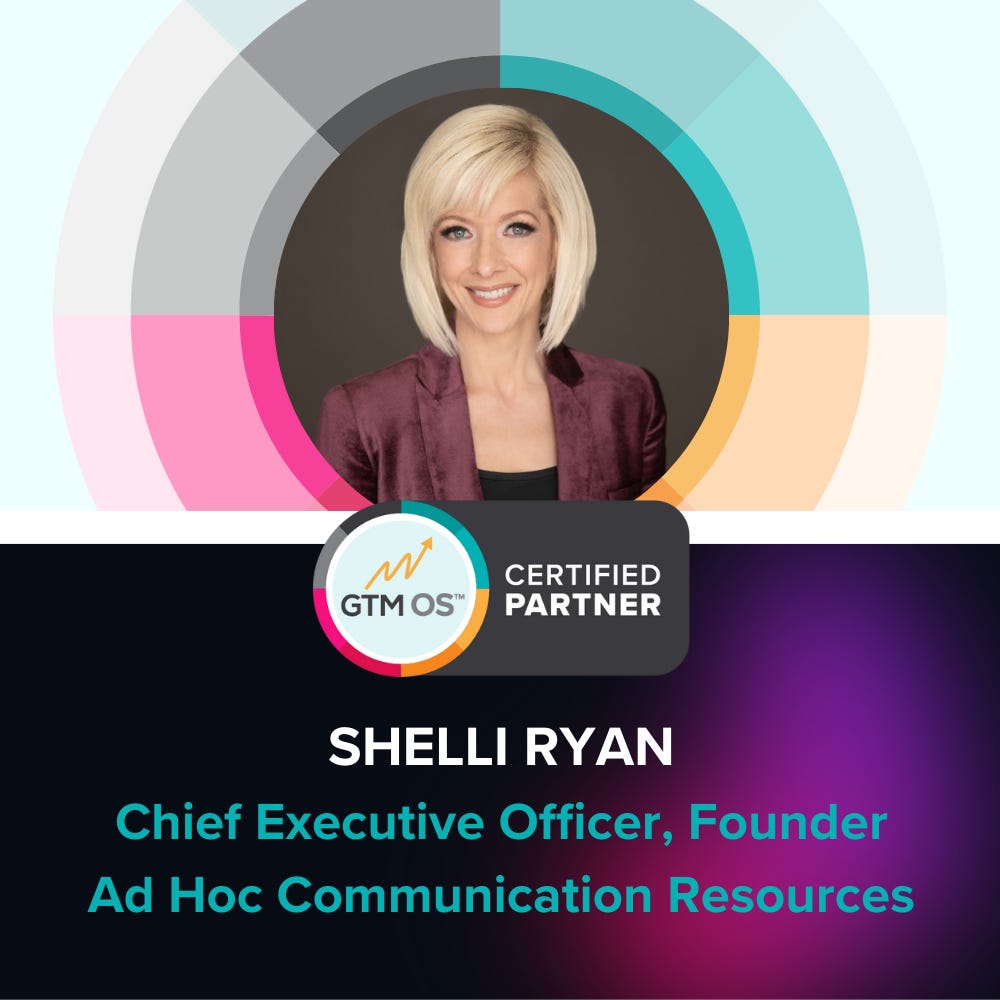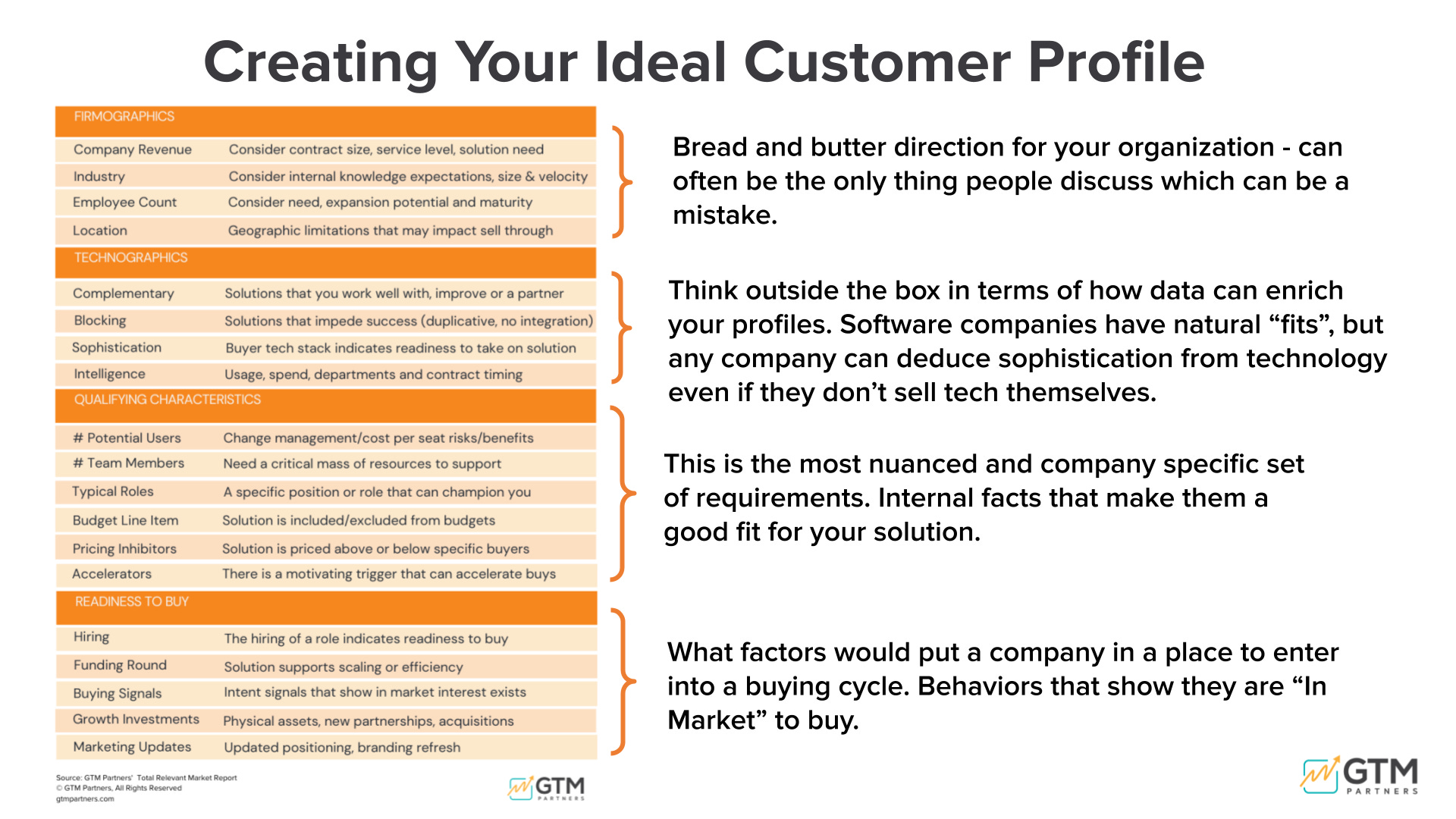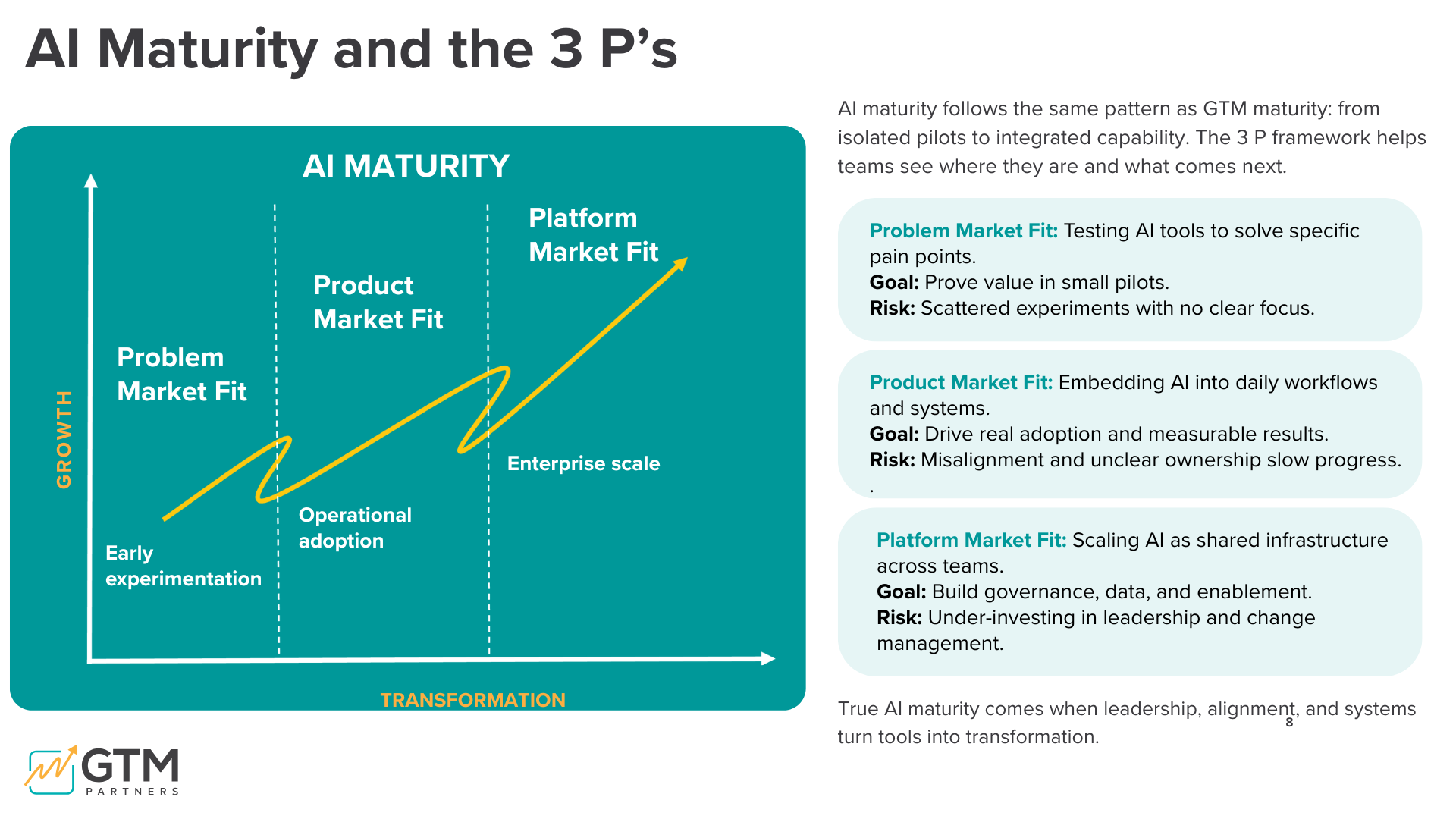Filters
Why AI is changing how companies evaluate product-led growth
Thanks for being one of over 175,000 forward-thinking GTM Leaders who subscribe to this weekly research note.
This week’s research note includes:
GTM Research: Why AI is changing how companies evaluate product-led growth
Poll Question: What’s been your experience working with fractional GTM leaders?
GTM OS Certified Partner Spotlight: Shelli Ryan, Ad Hoc
Upcoming Events and Access
Research: Why AI is changing how companies evaluate product-led growth
Product-led growth (PLG) has always been a tempting strategy for GTM leaders.
It promises scale, efficiency, and viral adoption. When it works, it works spectacularly …think Slack, Zoom, and Calendly.
In fact, more than 90% of SaaS companies investing in PLG plan to increase that investment in 2025.
But fewer than half report consistent revenue efficiency from their PLG motions.
That gap is widening . . . and AI may be both the cause and the cure.
The original promise of Product-Led Growth was simple: reduce the cost of go-to-market by letting the product do the work.
For the right ICP, value would be obvious, conversion friction low, and expansion organic. For everyone else, they’d churn fast—but you’d never lose money finding out.
Now, AI is changing that equation.
It’s not just making products easier to demo or onboard.
It’s enabling products to create new products.
AI can observe thousands of customer behaviors, identify common patterns, and even recommend (or generate) new features or entire workflows automatically.
The question isn’t just “Should we go PLG?” anymore.
It’s “Are we ready for what happens when our product starts to sell—and build—itself?”
The PLG Appeal
The PLG motion has clear advantages. It’s faster, cheaper, and often more aligned with how modern buyers prefer to evaluate software. Users can experience value before signing a contract.
Benefits of PLG:
Less labor intensive
Delivers active users
Shortens sales cycles
Reduces buyer friction
For companies with user-friendly products and self-motivated customers, PLG can be a powerful lever for growth.
The PLG Reality
But PLG isn’t for everyone.
As the GTM Partners Product-Led Growth Fit Model shows, PLG only thrives when:
Your product is easy to use, and
Your users are eager to self-serve and evangelize.
When either side of that equation breaks down, the model shifts toward Sales-Assisted PLG or even traditional sales-led growth.
And even for “pure” PLG companies, community and support investment is non-negotiable. Someone still needs to help users onboard, troubleshoot, and connect the dots to enterprise value.
Is PLG Right for Your Buyer?
Your product may be ready for PLG—but your buyer might not be.
Ask yourself:
Is the problem easy to understand and the use cases well known?
Can users experience value without handholding?
Can individual users adopt without top-down approval?
Do users naturally share or promote it to others?
If you’re answering “no” to several of these questions, you’re likely to encounter friction—and expensive acquisition costs disguised as free trials.
The AI Effect
AI has re-ignited the PLG conversation. With AI-powered onboarding, in-app guidance, and conversational interfaces, products appear easier to use than ever.
That’s the upside.
AI can reduce time-to-value and help users see instant results, making PLG motions more scalable and efficient.
But there’s a downside:
Feature inflation. AI makes products look intuitive—even when they’re not.
Commoditization. When every product feels “smart,” differentiation erodes.
Shallow adoption. AI can create quick engagement spikes that don’t translate into long-term usage.
AI doesn’t eliminate PLG risk. It amplifies it. You can attract more users, faster. But lose them just as quickly without a real moat to ensure stickiness.
The Future: Sales-Assisted PLG
Most successful GTM teams aren’t going “all in” on PLG. They’re blending self-serve experiences with guided conversion.
Sales-Assisted PLG combines the best of both worlds:
Product-led entry points (freemium, free trial, community)
Human-led expansion (sales, success, support)
This hybrid motion reduces friction at the top of the funnel while ensuring adoption and expansion in the enterprise.
Bottom Line
PLG still works—but not for everyone, and not automatically because of AI.
It works when:
The product is intuitive and habit-forming.
The buyer is empowered to act.
The company invests in support, community, and data-driven growth.
It fails when:
You confuse sign-ups for success.
You mistake automation for adoption.
You prioritize speed over depth of engagement.
Before you go PLG, ask yourself:
Is your product truly ready to sell itself—or just easier to demo with AI?
Learn More at GTM University
GTM University helps leaders and teams evaluate when to use Product-Led Growth—and when other GTM motions like Outbound, Partner-Led Growth, Event-Led Growth, or Community-Led strategies will drive more efficient revenue.
If your team is revisiting its GTM motion mix for 2025, GTM University includes modules on all the GTM Motions and how to build a playbook with the right mix.
Poll Question: What’s been your experience working with fractional GTM leaders?
We’ve already heard from more than 100 fractional executives in the upcoming State of Fractional GTM 2025 study.
Now it’s time to hear from the companies hiring them.
How’s it really going?
Feel free to leave comments on Sangram’s LinkedIn post asking the same question . . .
Certified Partner Spotlight: Shelli Ryan, Ad Hoc Communication Resources
On-Demand Talent & GTM Execution for High-Velocity Growth
When speed matters but strategy can’t be sacrificed, companies turn to Shelli Ryan and Ad Hoc Communication Resources. For nearly 30 years, Shelli and Ad Hoc have helped technology companies—from fintech and SaaS to healthtech and AI—accelerate their go-to-market momentum and build lasting market leadership.
Ad Hoc begins with a rigorous diagnostic of your current GTM strategy, identifying what’s working, what’s not, and what needs to evolve. From there, Shelli and her team reframe your positioning, sharpen your narrative, and embed seasoned experts who can execute on-demand—becoming a true extension of your team.
Whether you’re scaling quickly or navigating complexity, Ad Hoc delivers the clarity, capacity, and execution muscle to drive real results.
Where Ad Hoc Adds Value:
GTM assessments and strategic repositioning
On-demand fractional talent to fill capability gaps
Embedded execution support across marketing, sales, and growth
Proven processes that boost velocity and market differentiation
Built for speed. Backed by experience.
Learn more: Shelli Ryan Partner Page →
If you’d like to be a certified GTM Partner like Shelli and nearly 50 others, we’d love to talk to you about how to make that happen.
Upcoming Events: Where Sangram, Bryan, or a GTM Certified Partner Will Be Speaking
(DM Sangram for a discount code to attend or to get slides after the talk)
Fix Your Revenue Leaks - A GTM Workshop (hosted by GTM Certified Partner Sandy Yu) is running 7 city roadshow on 15 GTM problems in a city near you and there are only 3 left: Singapore (Nov. 4), New York City(Nov. 13), Melbourne (Dec. 3)
The Work Pause: a One-Hour Workday Retreat for GTM Leaders (hosted by GTM OS Certified Partner Sarah Allen-Short), October 22 from 12-1 p.m. EST on Zoom.
Why Most Startups Don’t Scale: The 15 GTM Mistakes Nobody Talks About (Hosted by GTM Certified Partners Tim Hillison of Entry Point 1, Lydia Flocchini of Motion to Scale, and Tech Crunch). This event is part of Tech Crunch Disrupt 2025, Oct 28, San Francisco
Going to Market, Every Entrepreneur’s Goal (keynote by GTM Certified Partner Don Drury) November 4, 2025 | 7:00 pm - 8:30 pm ET, Newton, MA
Usage Economy Summit (hosted by LogiSense), Sangram will be presenting, Nov 5, San Francisco
Love,
Sangram and Bryan
p.s. Access GTM University | Hire GTM OS Certified Partners | Read Fractional Friday
Thanks for reading GTMonday by GTM Partners!
Subscribe for free to receive new posts and support our research work.







